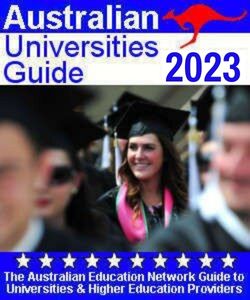Australian Student Visa
The Australian Government operates an Overseas Student Program (OSP) that allows people who are not Australian citizens or Australian permanent residents to study in Australia.
Any person who is not an Australian resident may apply to study in Australia under the OSP.
A person who wants to study under the program must obtain a Australian student visa before they can commence a course of study in Australia.
You can be granted a student visa only if you wish to undertake a registered course or part of a registered course on a full-time basis.
A registered course is an education or training course offered by an Australian education provider who is registered with the Australian Government to offer courses to overseas students.
The Australian education system is divided broadly into four levels of schooling:
- primary;
- secondary;
- vocational education; and
- training and higher education.
However, there are also other options available to students from other countries wishing to undertake study in Australia, such as English Language Intensive Courses for Overseas Students (ELICOS) and non-award courses.
Links between visa subclasses and courses/qualifications
| Student visa subclass | Courses/qualifications |
| Subclass 570: Independent ELICOS | English Language Intensive Courses for Overseas Students (ELICOS) undertaken as a stand-alone course, not leading to an Australian award |
| Subclass 571: Schools | Primary school Secondary school including junior and senior secondary Approved secondary exchange programs |
| Subclass 572: Vocational Education and Training (VET) | Certificate I, II, III, and IV Diploma, Advanced diploma Former RATE system qualifications: Certificate, Advanced certificate and Associate diploma |
| Subclass 573: Higher Education | Bachelor degree Associate degree Graduate certificate Graduate diploma Masters Coursework |
| Subclass 574: Masters (Research) and Doctorate | Masters Research Doctoral degree |
| Subclass 576: AusAID and Defence | Full-time courses of all types undertaken by AusAID or Defence students sponsored by the Australian Government |
Assessment levels
On 1 July 2001, the gazetted/non-gazetted country regime was replaced by an assessment level regime.
Different assessment levels within each of the student visa subclasses determine eligibility for a student visa, by establishing the threshold requirements that an applicant must meet in order to be granted a student visa.
The assessment levels are prescribed according to the passport held and the education sector of study.
The country/sector assessment levels assigned have been based upon objective criteria and objective data regarding the compliance of students from different countries and in different education sectors.
Assessment level 1 represents the lowest assessment level and assessment level 5 the highest.
The higher the assessment level, the greater the minimum evidentiary standards an Australian student visa applicant has to satisfy in respect of criteria relating to financial capacity, English proficiency and other relevant matters.
Assessment level 3, 4 and 5 applicants must make their initial student visa application while they are outside of Australia.
Forms and Student Information Booklets
This list offers direct links to the latest versions of the department's student information and application forms, and student information booklets.
Please note: these documents are PDF files which require the Adobe Acrobat Reader, version 4 or later, on your computer. For more information, see PDF Files.
- Temporary Entry Overseas Students Forms:
- Form 157A - Application for a student (temporary) visa
- Form 157P - Application for a student visa with permission to work
- Form 157E - Electronic application for a student visa (not available in hard copy)
- Form 919 - Student dependant nomination
- Form 990i - Charges
Note: printed copies of the Temporary Entry Overseas Students booklets (except for 1168, AusAID or Defence) are available at departmental offices in and outside Australia.
Further information
For further information, see also:
Forms (including information booklets with detailed information)
These documents are in PDF format requiring the Adobe Acrobat Reader, version 4 or later - for an explanation, see PDF Files.
Share This Page:




         |

Top 10 Highest Paid Vice-Chancellors @ Australian Universities
Top 10 Things To Do at a University Open Day

